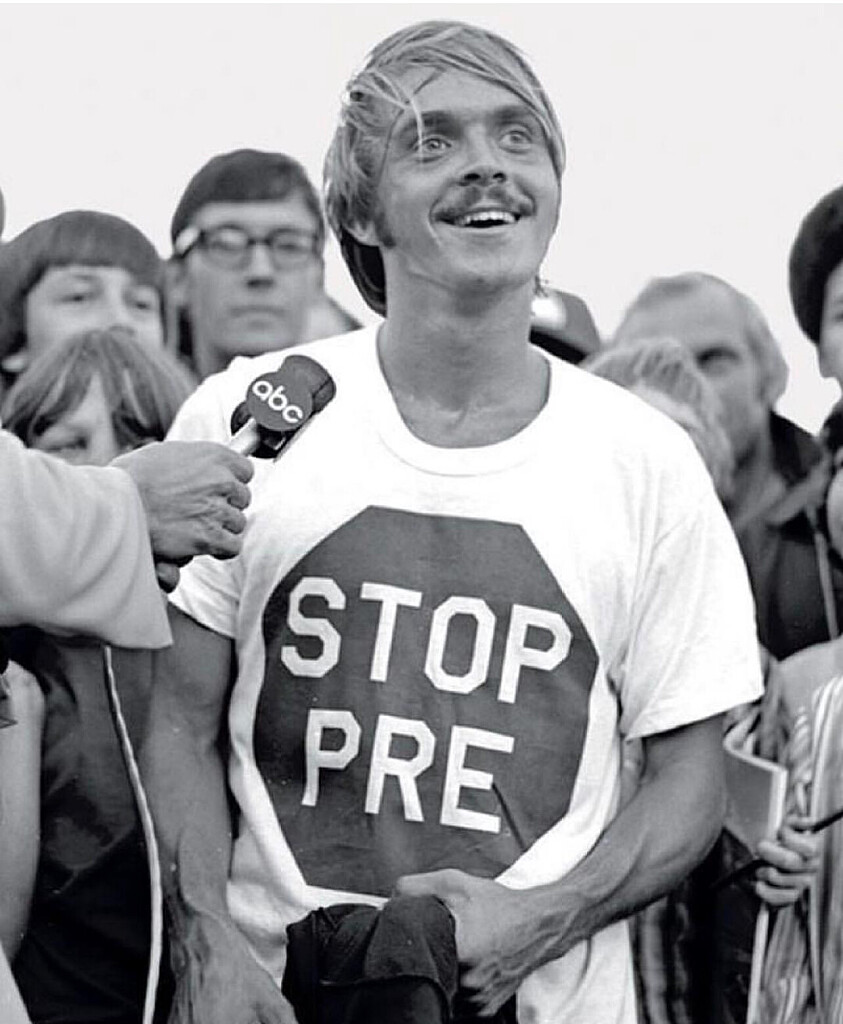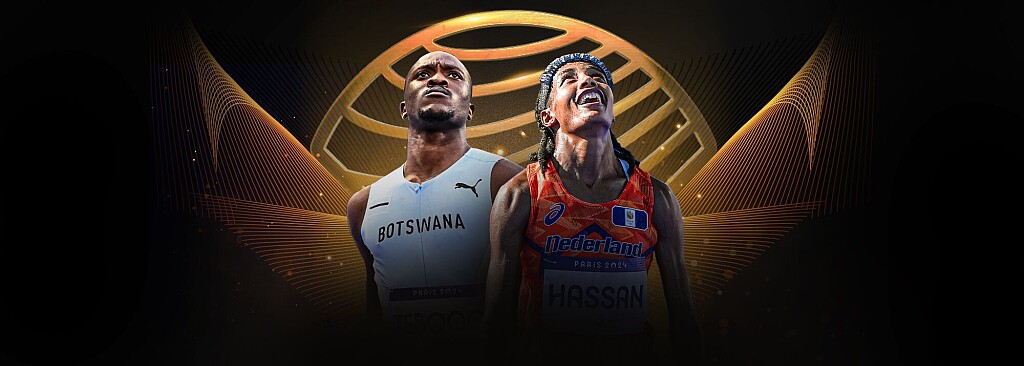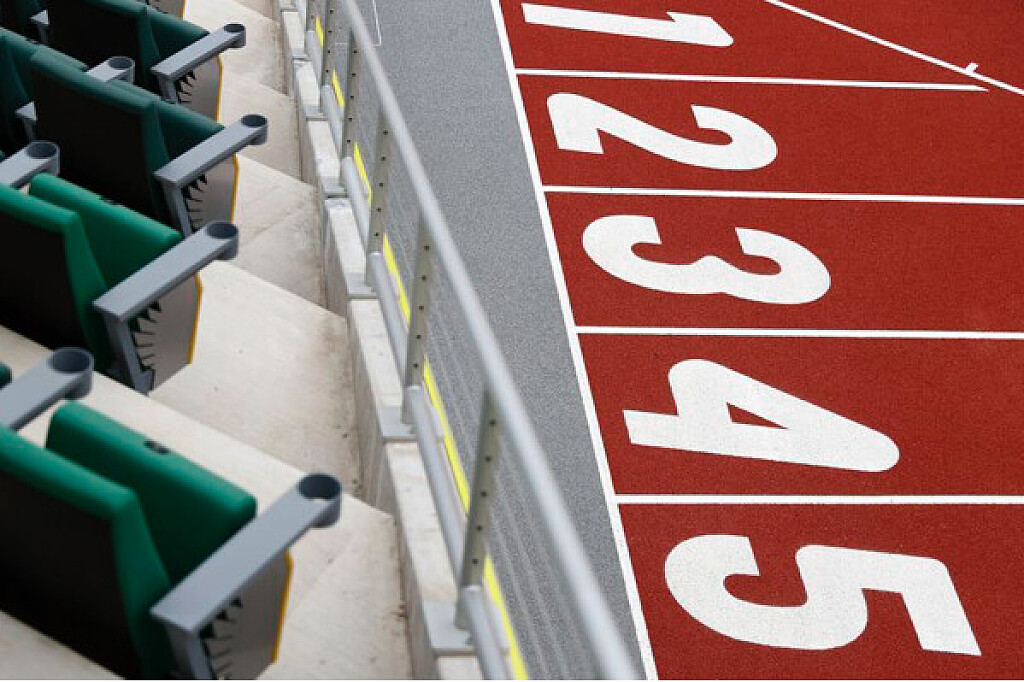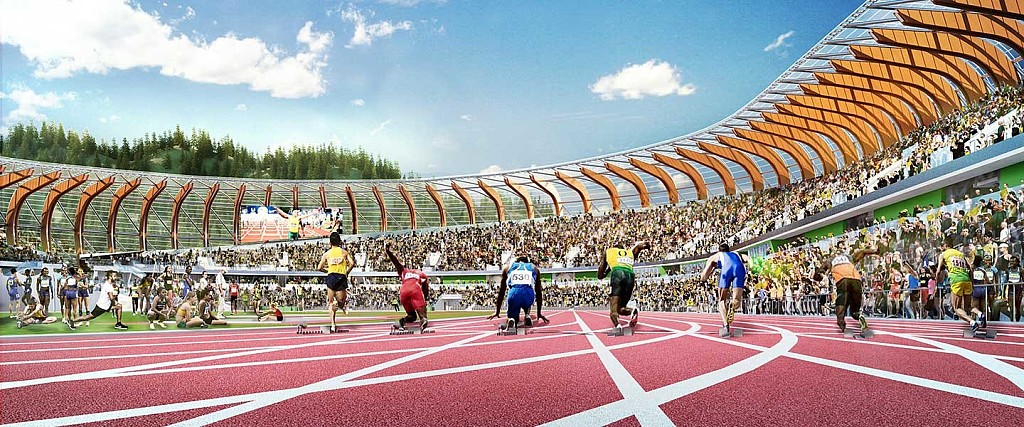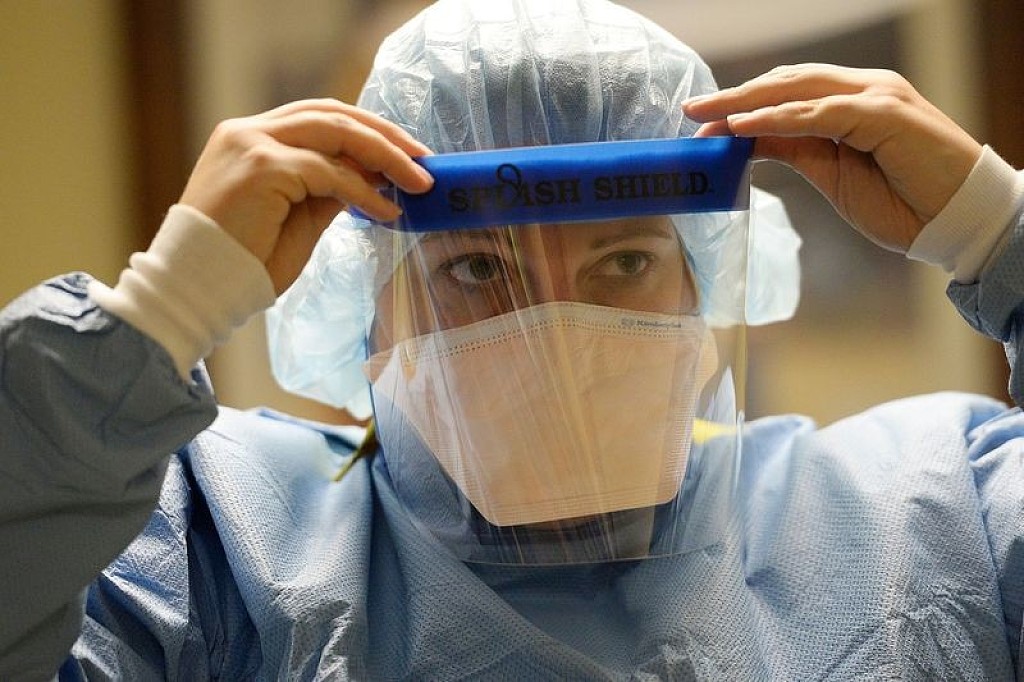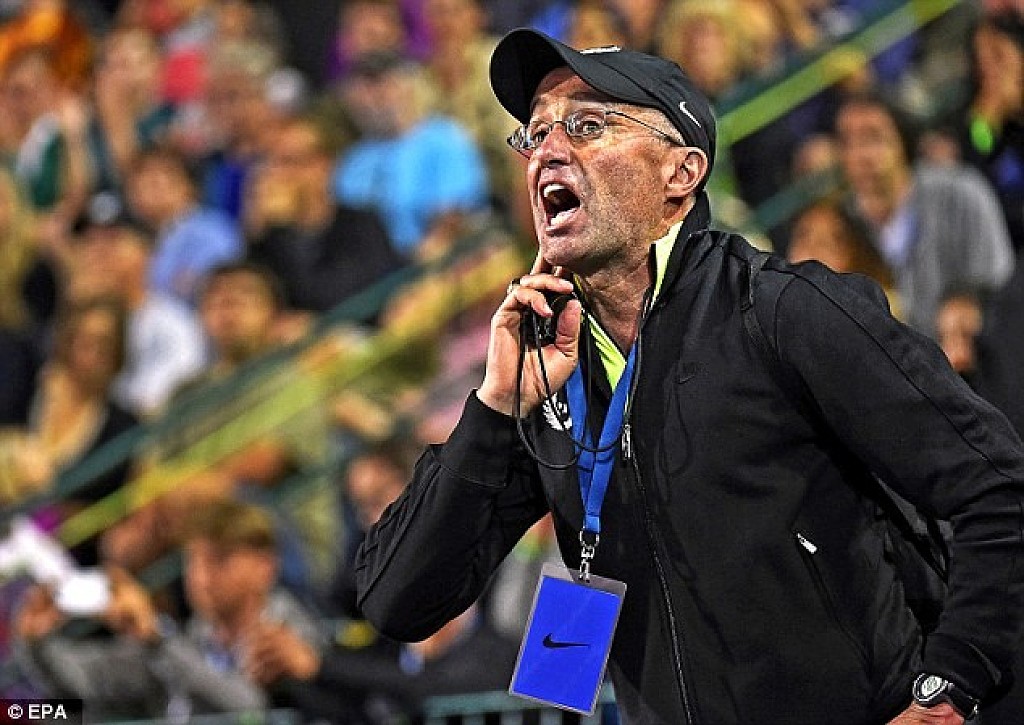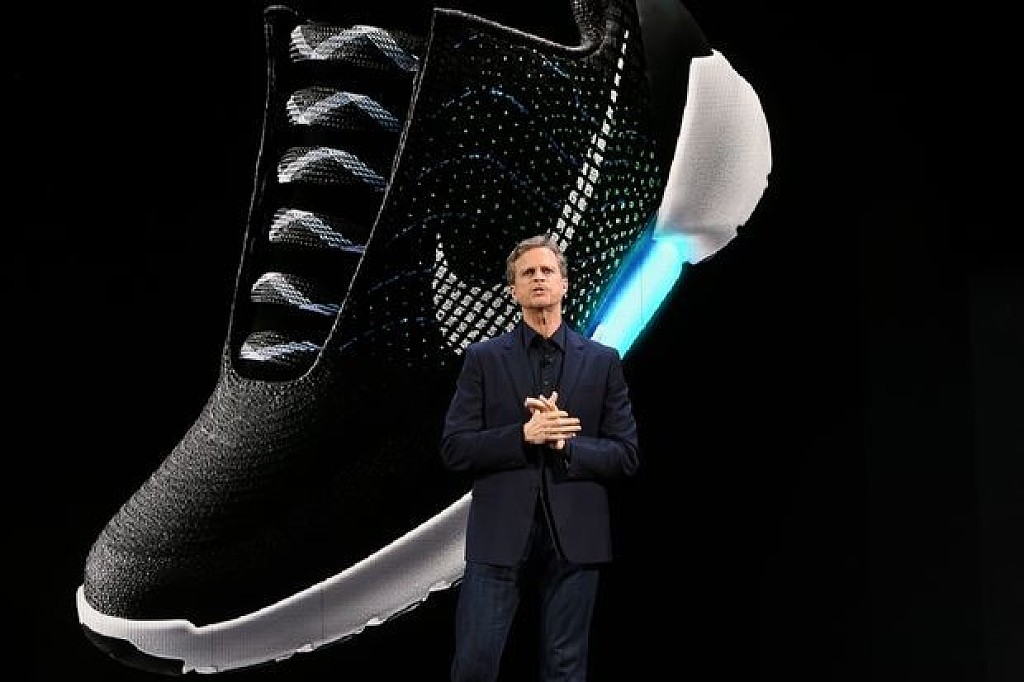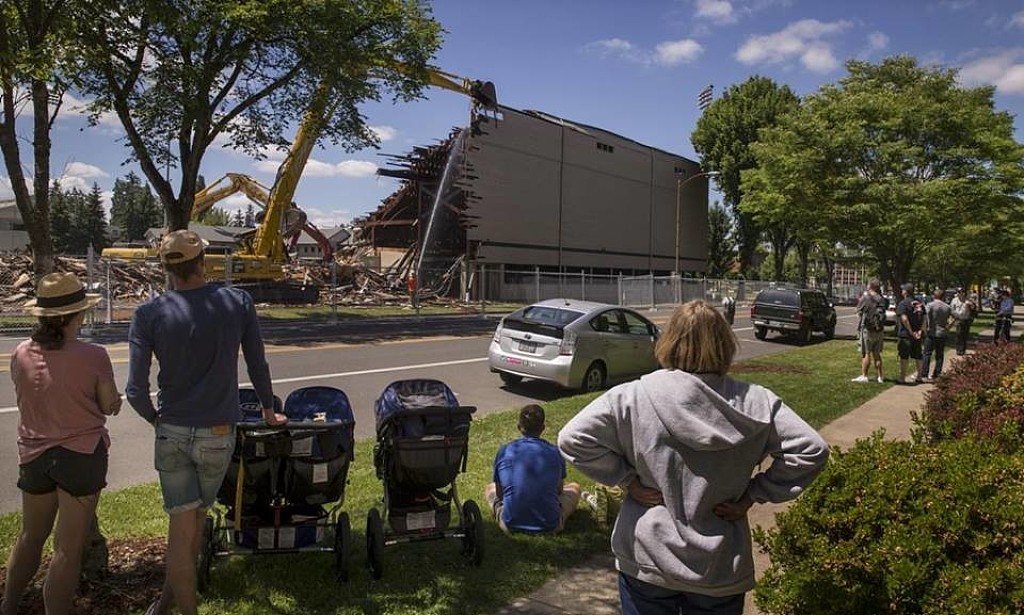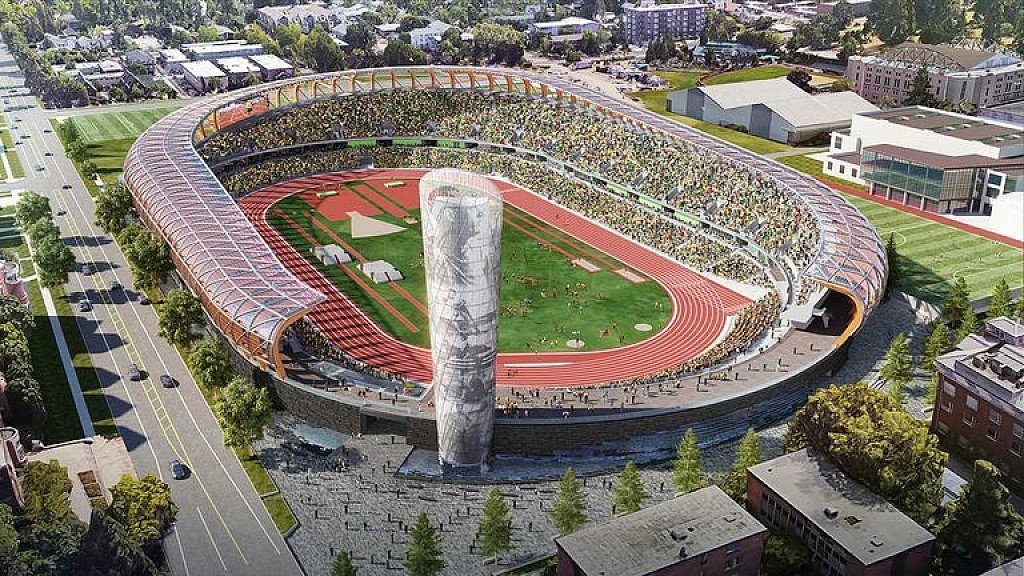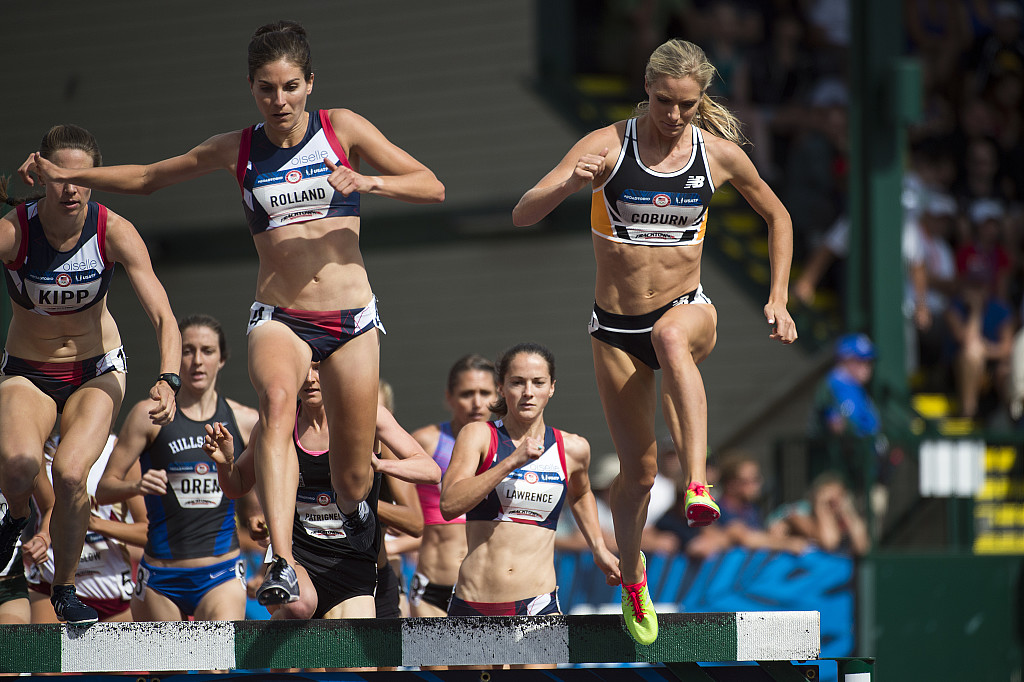Running News Daily
Running News Daily is edited by Bob Anderson. Send your news items to bob@mybestruns.com Advertising opportunities available. Train the Kenyan Way at KATA Kenya and Portugal owned and operated by Bob Anderson. Be sure to catch our movie A Long Run the movie KATA Running Camps and KATA Potato Farms - 31 now open in Kenya! https://kata.ke/
Index to Daily Posts · Sign Up For Updates · Run The World Feed
Articles tagged #Phil Knight
Today's Running News
Remembering Steve Prefontaine: 50 Years Since His Untimely Passing
On May 30, 1975, the running world lost one of its most charismatic and determined figures: Steve Prefontaine. Known simply as “Pre,” he wasn’t just a distance runner—he was a phenomenon, captivating fans with his relentless style and rebellious spirit. As we mark 59 years since his passing, let’s celebrate his life by sharing stories and facts that many may not know.
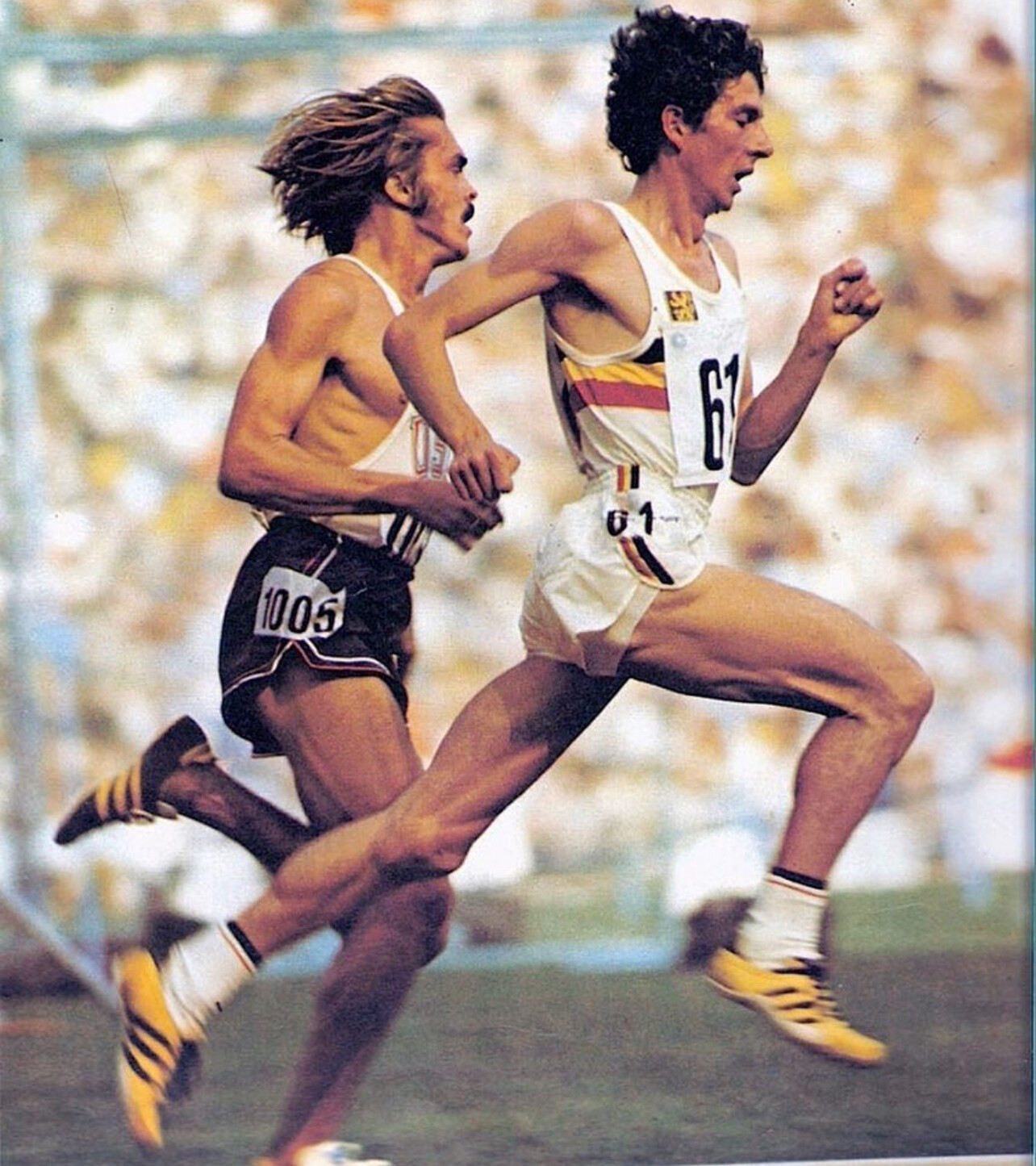
The Man Behind the Legend
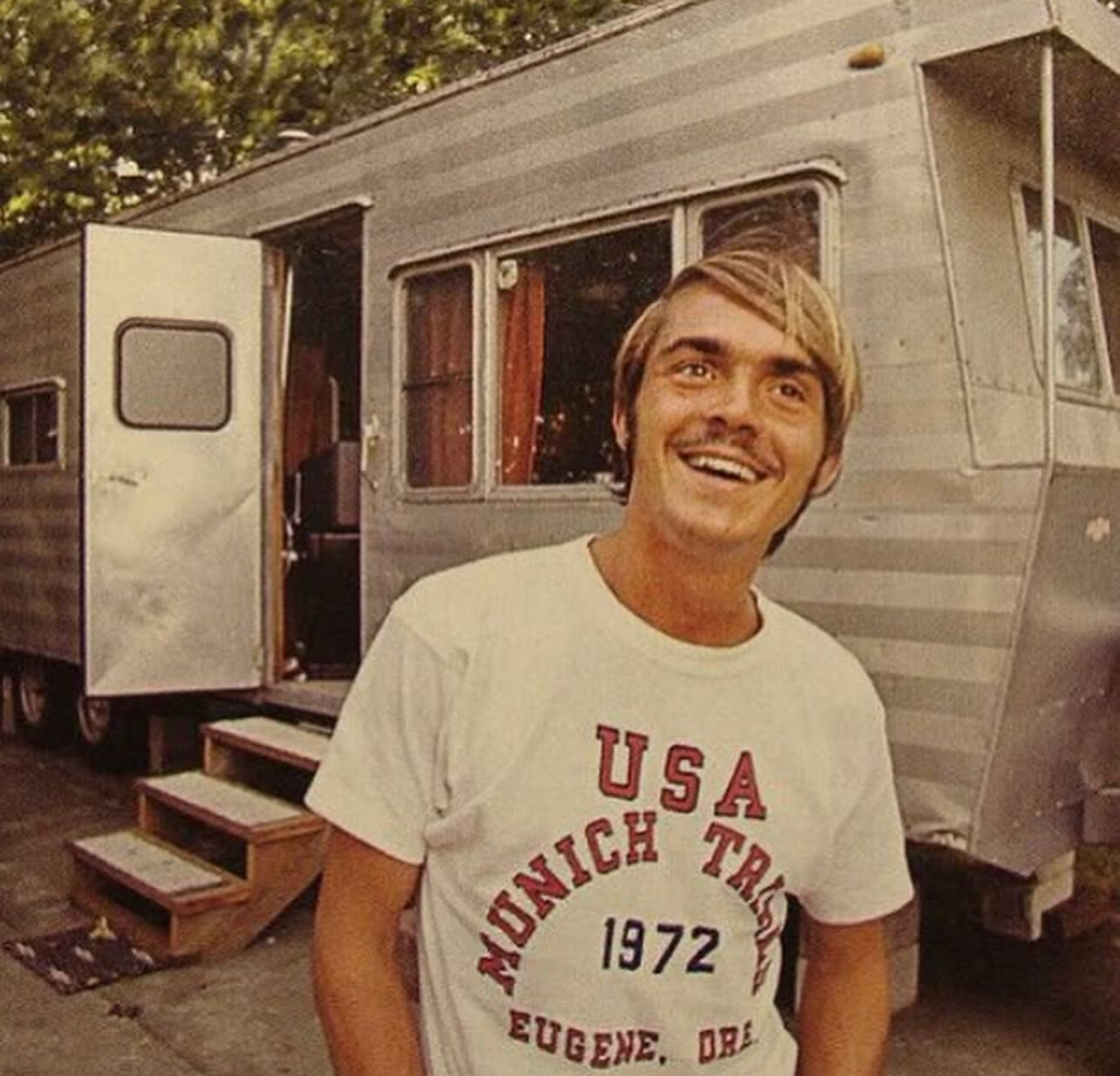
Born in Coos Bay, Oregon, Steve Prefontaine became a running icon in an era dominated by more conservative racing strategies. His front-running style—pushing the pace from the gun—symbolized not just his physical prowess but his sheer will to win.
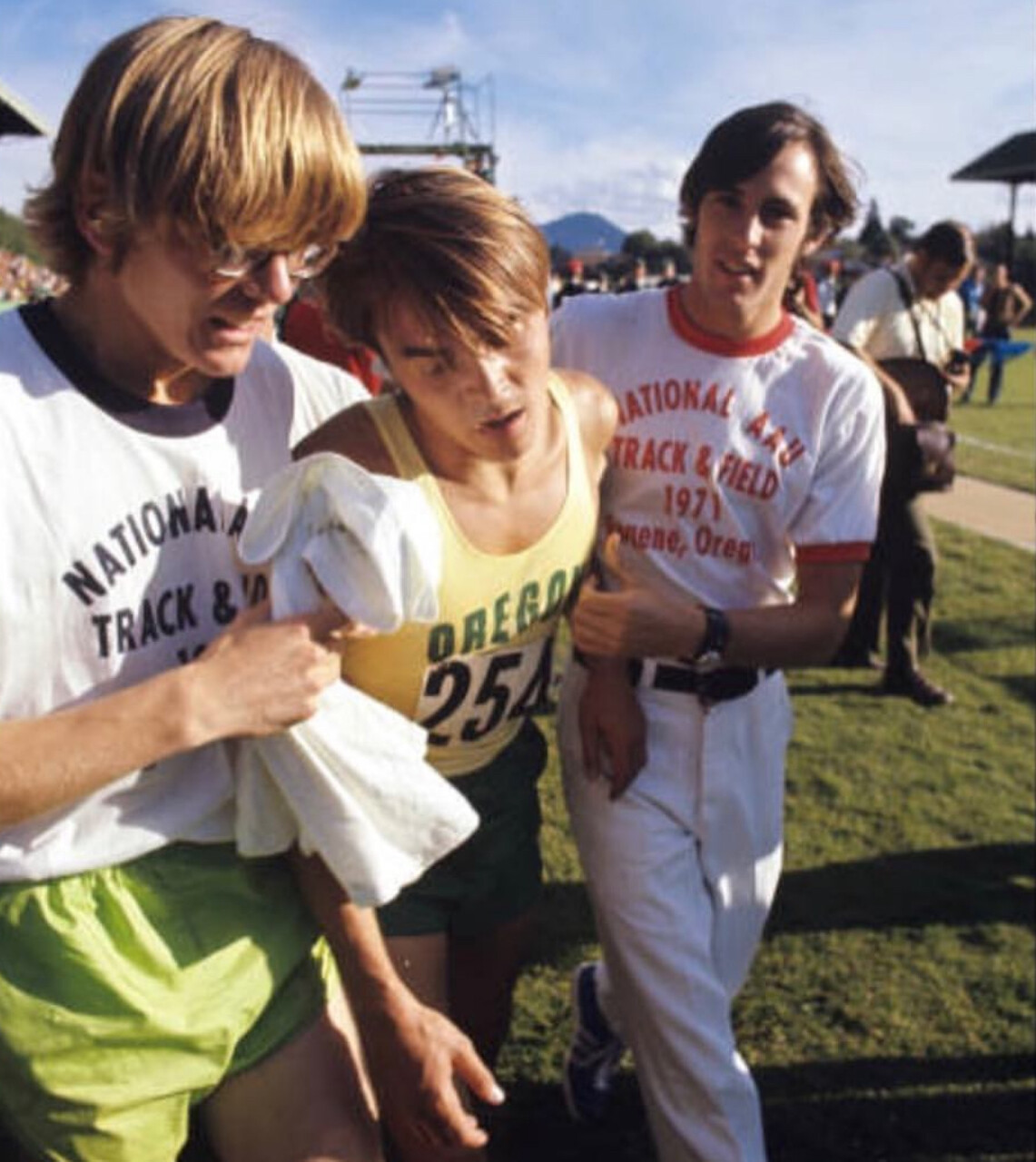
While many remember his records, charisma, and tragic death at age 24, there’s more to Pre’s story:
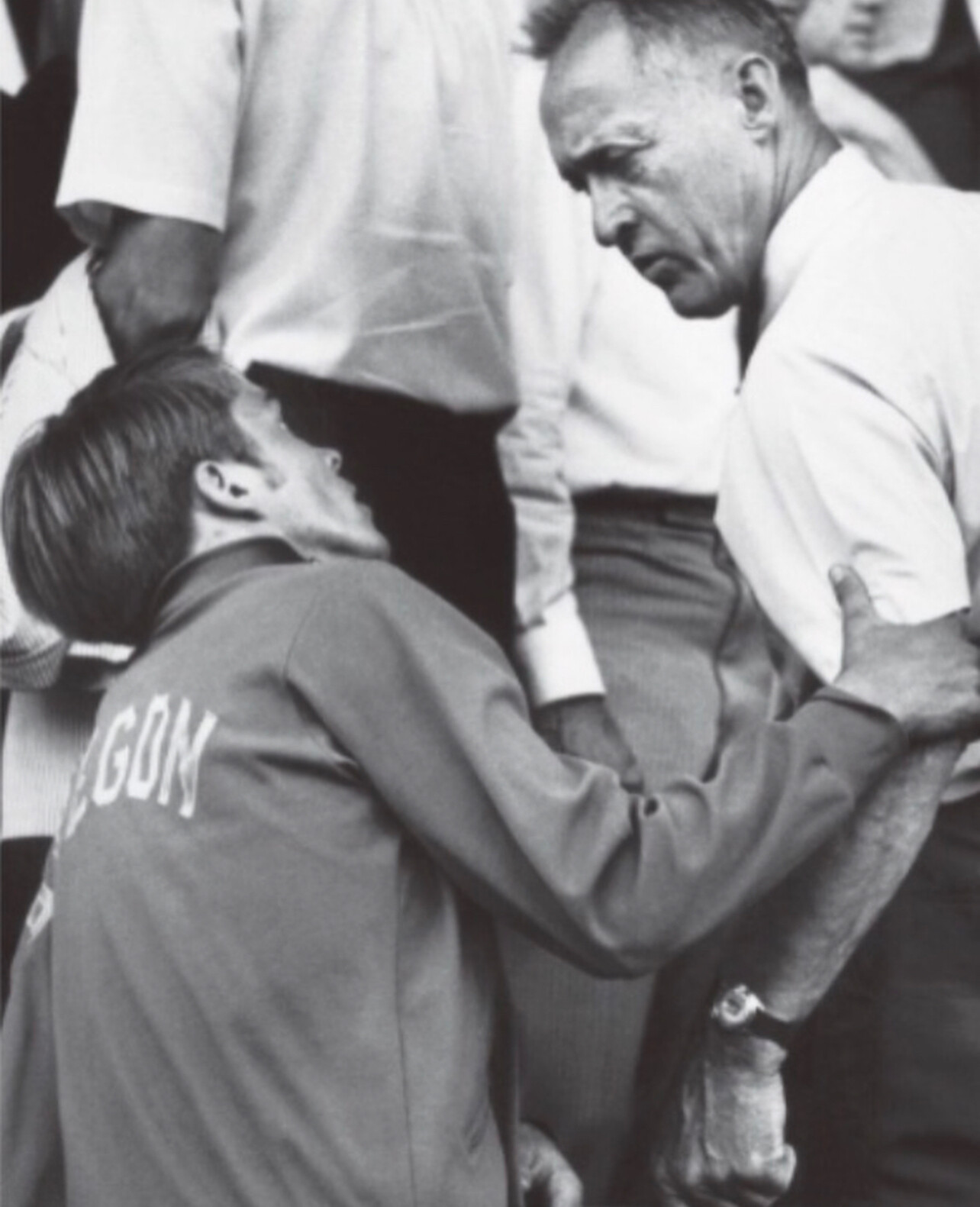
Lesser-Known Facts About Steve Prefontaine
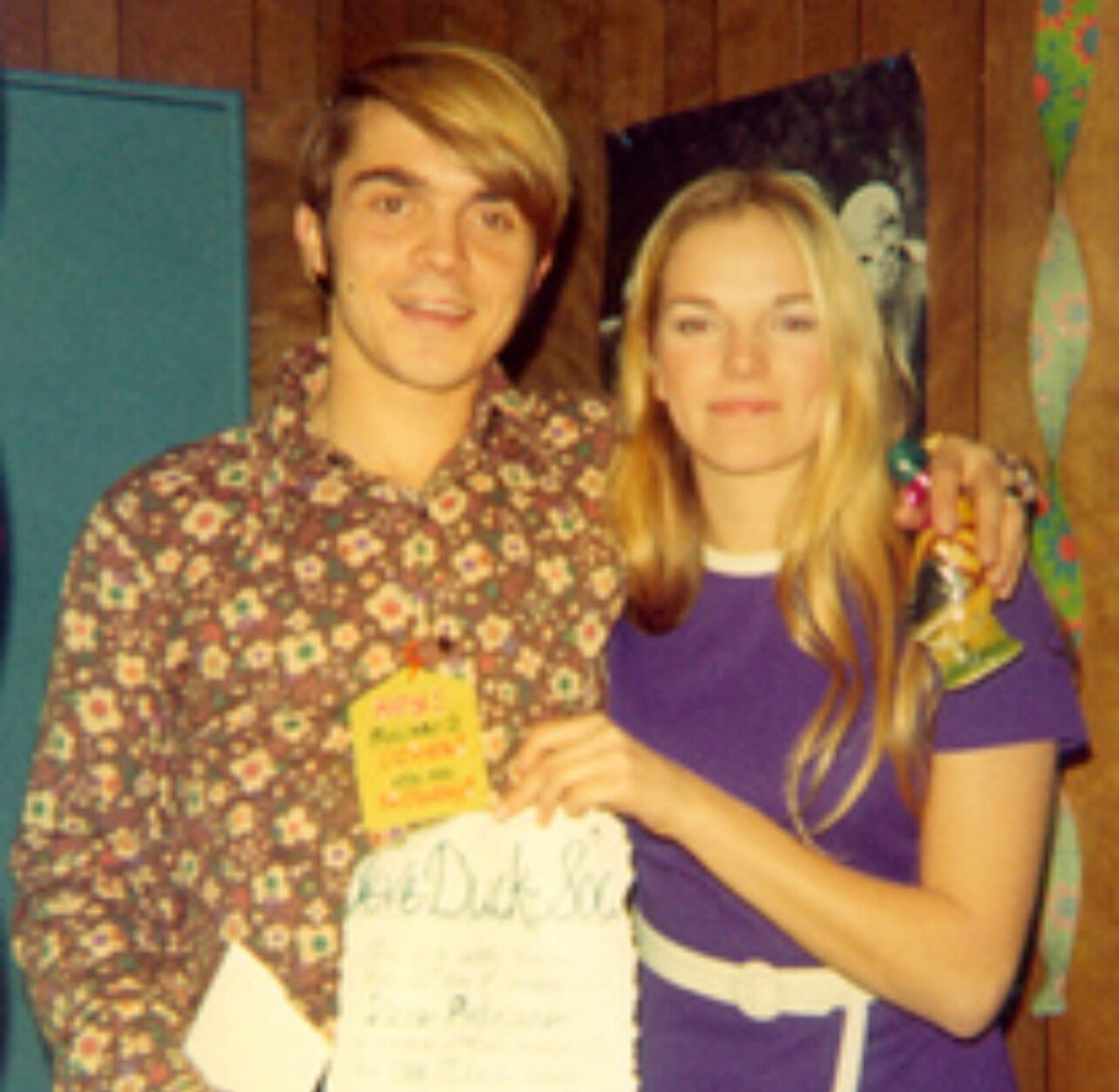
✅ His First Love Was Football
Before he discovered distance running, Prefontaine dreamed of playing football. His small stature (just over 5’9”) eventually led him to cross-country and track, where his natural talent shone.
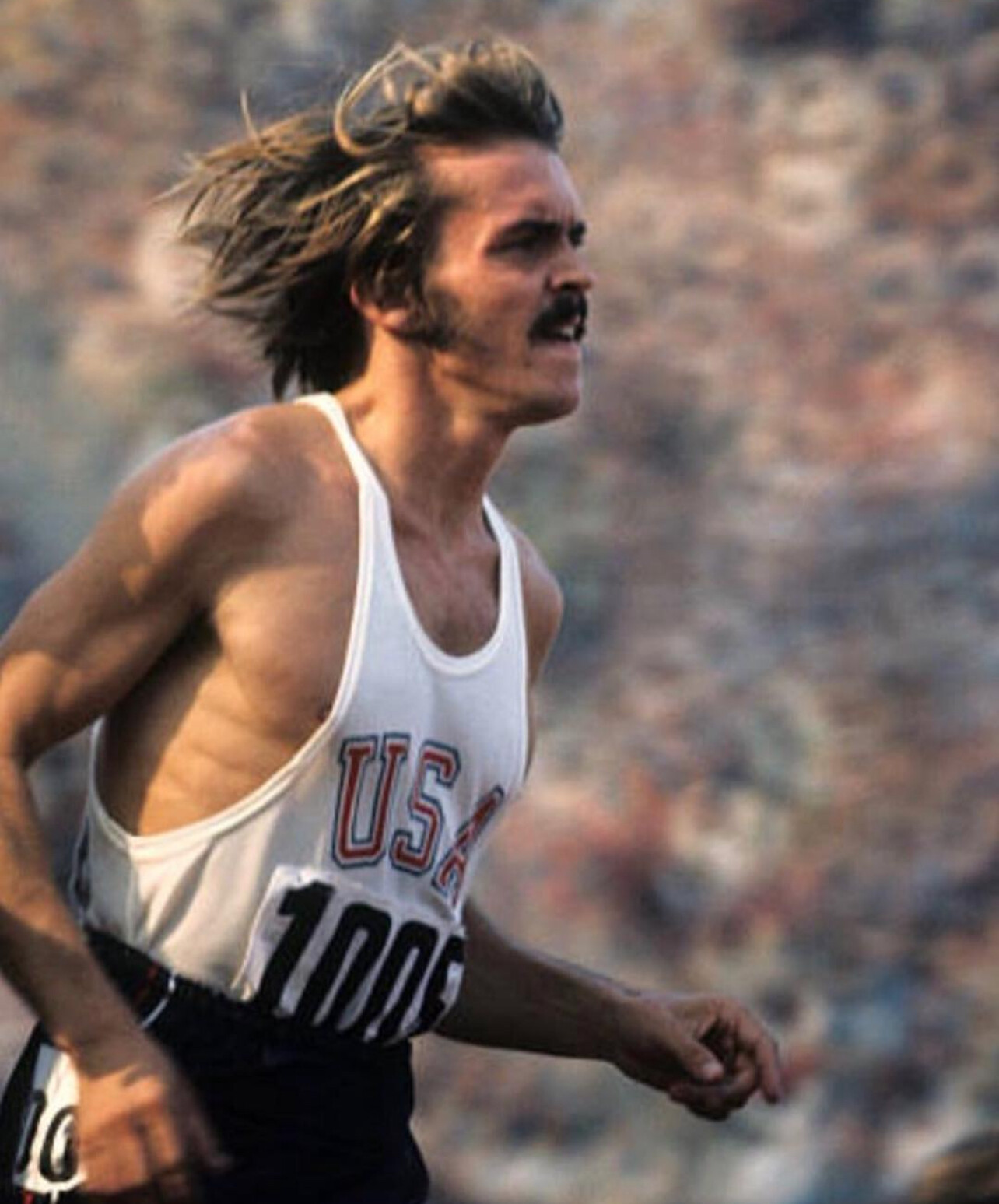
✅ He Was a Student of the Sport
Pre wasn’t just a competitor—he was a student of running. He meticulously logged his workouts and was known to study race tactics and course layouts in detail, even though he famously raced “without a watch.”
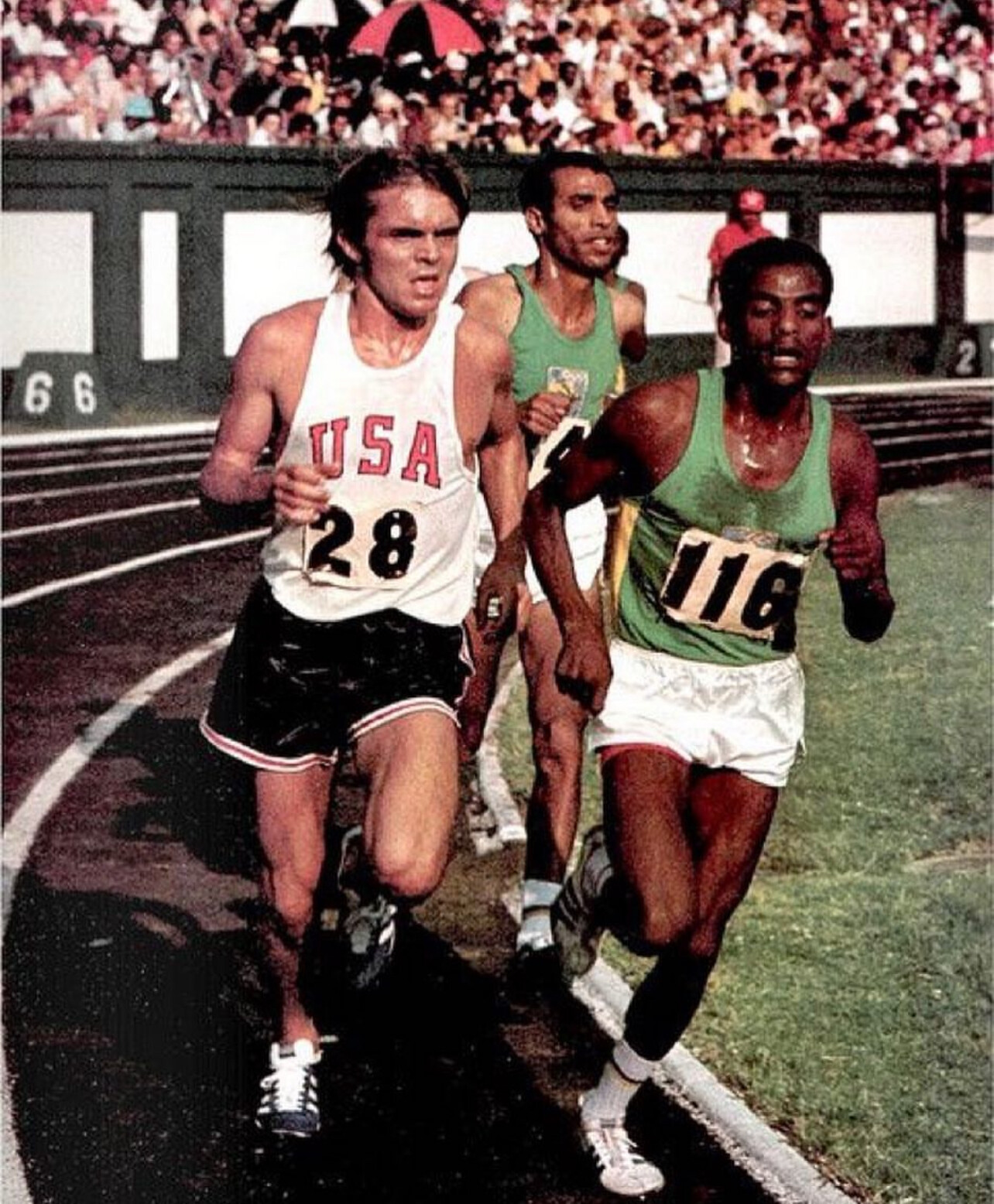
✅ He Worked Hard Off the Track
While at the University of Oregon, Prefontaine worked part-time at a bar called The Prince Pückler’s Ice Cream Parlor to make ends meet. He was known for being personable and engaging with customers.
✅ He Advocated for Amateur Athletes
Pre was a vocal critic of the AAU (Amateur Athletic Union) and its restrictive policies. He championed athlete rights, paving the way for future reforms in track and field compensation and professionalism.
✅ He Had an Eye for Art
Many don’t know that Prefontaine had a strong artistic side. He enjoyed sketching and was known to doodle during downtime, particularly in college.
✅ The 1972 Munich Olympics Fueled His Fire
After finishing fourth in the 5000 meters in Munich, just shy of the medals, Pre’s determination was stronger than ever. He was already planning his strategy for the 1976 Montreal Olympics—a dream tragically cut short.
✅ His Car Crash Had Controversial Theories
While officially ruled an accident (his MGB sports car flipped after hitting a rock wall), there have been whispers over the years of mechanical failure or other drivers being involved. Regardless, the crash at 24 years old left the running world stunned.
✅ He Was an Early Nike Ambassador
Phil Knight, co-founder of Nike, was an early supporter of Prefontaine. Pre wore early versions of Nike shoes and even helped test prototypes, playing a key role in building the brand’s credibility among elite athletes.
Legacy Beyond the Finish Line
Steve Prefontaine’s legacy isn’t just about times or places—it’s about spirit. His courage to lead from the front, his determination to fight for athletes’ rights, and his ability to inspire transcended the track. His story continues to resonate with runners and fans, even 59 years after his death.
As we reflect today, let’s honor Pre’s legacy not just by remembering his races, but by embracing his passion, fearlessness, and commitment to excellence.
by Boris Baron
Login to leave a comment
Hassan and Tebogo named World Athletes of the Year
Olympic champions Sifan Hassan and Letsile Tebogo have been announced as World Athletes of the Year at the World Athletics Awards 2024 in Monaco.
Following a vote by fans, Hassan and Tebogo received top honors on an evening that saw six athletes crowned in three categories – track, field and out of stadium – before the overall two winners were revealed.
Tebogo was confirmed as men’s track athlete of the year, with Sydney McLaughlin-Levrone receiving the women’s honour. Hassan claimed the women’s out of stadium crown and Tamirat Tola the men’s, while Mondo Duplantis and Yaroslava Mahuchikh were named field athletes of the year.
This year’s Rising Stars were also celebrated, with Sembo Almayew and Mattia Furlani receiving recognition.

World Athletes of the Year for 2024
Women’s World Athlete of the Year: Sifan Hassan (NED)Men’s World Athlete of the Year: Letsile Tebogo (BOT)
Women’s track: Sydney McLaughlin-Levrone (USA)Women’s field: Yaroslava Mahuchikh (UKR)Women’s out of stadium: Sifan Hassan (NED)Men’s track: Letsile Tebogo (BOT)Men’s field: Mondo Duplantis (SWE)Men’s out of stadium: Tamirat Tola (ETH)
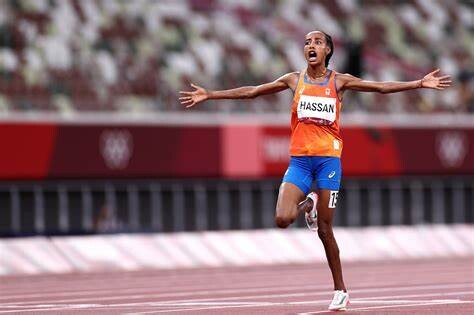
Women’s Rising Star: Sembo Almayew (ETH)Men’s Rising Star: Mattia Furlani (ITA)
“At the end of what has been a stellar year for athletics, we are delighted to reveal our list of World Athletes of the Year – both in their respective disciplines and overall,” said World Athletics President Sebastian Coe. “This group of athletes represents the very best of our sport and has this year redefined what is possible in terms of athletic performance.
“Our 2024 cohort set new standards in heights, speed and distance, including six world records and a host of Olympic and national records between them.
“I congratulate all our award winners, and all of the athletes nominated for these honors, and I thank them for inspiring us all with their performances this year.”
World Athletes of the Year Hassan and Tebogo both won gold and claimed multiple medals at the Paris 2024 Olympic Games.
Dutch star Hassan’s medal treble in Paris was capped by her winning the final athletics gold medal of the Games with her triumph in the marathon in an Olympic record of 2:22:55. That performance came just 37 hours after Hassan claimed bronze in the 10,000m, and six days after her first medal in the French capital – also bronze – in the 5000m.
As a result, she became the first woman to win medals in the 5000m, 10,000m and marathon at the same Games, and the first athlete since Emil Zatopek, who won all three men’s titles in Helsinki in 1952.
Tebogo also made history in Paris when he won the 200m, as he claimed a first ever Olympic gold medal in any sport for Botswana. He ran an African record of 19.46 – a time that moved him to fifth on the world all-time list – and that performance followed his sixth-place finish in the 100m final. He went on to form part of Botswana’s silver medal-winning men’s 4x400m team.
He dipped under 20 seconds for 200m a total of nine times in 2024, with those performances topped by his Olympic title-winning mark which remained the fastest of the year.
His fellow track athlete of the year, McLaughlin-Levrone, improved her own world 400m hurdles record twice, to 50.65 and 50.37, and claimed Olympic gold in that event as well as in the 4x400m. Tola, who joined Hassan in being named out of stadium athlete of the year, won the Olympic marathon title in Paris in an Olympic record.
World records were set by both field athletes of the year. Mahuchikh cleared 2.10m to improve the world high jump record before winning Olympic gold, while Duplantis revised his own world pole vault record three times, eventually taking it to 6.26m, and won the Olympic title.
"Thank you to the fans, to everybody who voted," said Hassan, who was in Monaco to receive her two awards. "I never thought I was going to win this one. This year was crazy. It’s not only me – all the athletes have been amazing. I’m really grateful. What more can I say?"
Standing alongside Hassan on the stage at the Theatre Princesse Grace, Tebogo said: "It feels amazing to know that the fans are always there for us athletes. It was a great year.
"This means a lot," he added. "It’s not just about the team that is around you, there are a lot of fans out there that really want us to win something great for the continent. It was a real surprise to hear my name because I didn’t expect this."
Almayew and Furlani named Rising Stars of 2024
Not only did Sembo Almayew and Mattia Furlani achieve great things as U20 athletes in 2024, they both also secured success on the senior stage.
Almayew finished fifth in the 3000m steeplechase final at the Paris Olympics, going close to her own national U20 record with her 9:00.83 performance, before she travelled to Lima where she won the world U20 title, setting a championship record in the process. With that win, the 19-year-old became the first ever Ethiopian world U20 women’s steeplechase champion.
Furlani improved the world U20 long jump record to 8.38m at the European Championships on home soil in Rome to secure silver, and he won two more senior major medals at the World Indoor Championships, where he got another silver, and the Olympic Games, where he claimed bronze.
In Glasgow – at the age of 19 years and 24 days – Furlani became the youngest athlete ever to win a world indoor medal in the horizontal jumps.
Knight wins President’s Award
The winner of the President’s Award was also announced in Monaco on Sunday (1), with Nike co-founder Phil Knight receiving the honour in recognition of his constant inspiring support for athletics and the development of the sport.
The President's Award, first awarded in 2016, recognises and honours exceptional service to athletics. Past winners of the award include the Ukrainian Athletics Association, British journalist Vikki Orvice, Swiss meeting director Andreas Brugger, Jamaican sprint superstar Usain Bolt, the Abbott World Marathon Majors, and 1968 men’s 200m medallists Tommie Smith, Peter Norman and John Carlos for their iconic moment on the podium in Mexico.
“Phil Knight’s passion for athletics is pretty much lifelong,” said Coe. “He developed an almost father-son relationship with his coach, the legendary Bill Bowerman, whose training approach was a departure from the orthodoxies of the day and who not only guided Knight’s career on the track but became a central figure when Phil took his first tentative steps in the running shoe business that became the dominant global force Nike.
“His love of athletics runs through Nike. It is a business created and driven by runners, with Phil never afraid to be the front runner.”
Knight said: “Thank you, Seb Coe, for the ultimate honour of the President’s Award, given by World Athletics. I am in great company, with Tommie Smith and John Carlos, and Usain Bolt. Obviously, I didn’t run as fast as those guys, but I am in such high company that I am thrilled by the award. Track and field has always been an important part of Nike – it has always been a central part of who Nike is.
“I do think running will continue to grow. Not only does Seb and his team do a great job promoting the sport, but it is a sport that not only is enjoyable, but it is probably the best fitness activity you can do. So, for me to win this honour, it is very meaningful.”
During the ceremony, a moment was taken to remember last year’s men’s out of stadium athlete of the year Kelvin Kiptum, the marathon world record-holder who died in a road traffic accident in February, as well as other figures from the sport who have passed away in 2024.
by World Athletics
Login to leave a comment
Women athletes allege body shaming within Oregon Ducks track and field program
Six women athletes who left the University of Oregon track and field program in recent seasons say they felt devalued as individuals and at risk for eating disorders because of the program’s data-driven approach to their weight and body fat percentages.
Five of the women departed with remaining eligibility.

One said she began binge-eating while at Oregon. Another says she struggles with body dysmorphia and has nightmares about competing at Hayward Field, Oregon’s iconic track stadium, while UO coaches stare at her and say: “You’re never going to be good enough.”
Robert Johnson, who became UO’s track and field and cross country head coach in 2012, has guided the Ducks to 14 NCAA championships while elevating what already had been one of the sport’s premier college programs.
Under Johnson the Ducks increasingly have embraced expensive and advanced technological tools such as blood tests, hydration tests and DEXA scans. A DEXA scan is a medical imaging test that uses X-rays to precisely measure bone density and body fat percentage.
DEXA scans, in particular, have become a flashpoint for some athletes, who say the precise body fat percentage measurements can trigger unhealthy behaviors.
Johnson contends his scientific approach largely removes human bias from judgments about athletes and allows the UO coaching staff to design workouts precisely tailored to each athlete’s needs.
“Track is nothing but numbers,” he says. “A good mathematician probably could be a good track coach.”
He says UO athletes receive DEXA scans in the fall, winter and spring, and no more often because of radiation emitted during the tests.
“When we get the numbers from our DEXA scans, we have an Excel spreadsheet that we can plug the numbers into, hit a button and it gives us a starting value for a training program.” he says. “It allows us to be cutting edge and innovative in our approach to performance.”
Some athletes contend this innovation comes at a staggering personal price.
An athlete who graduated from Oregon at the end of the 2020 school year emailed UO deputy athletic director Lisa Peterson, senior women’s administrator, in October 2020.
In the email she says she had been receiving text messages and Snapchats that fall from former teammates so worried about upcoming DEXA scans they were starving themselves.
She tells Peterson in the email: “I have seen and experienced an absolutely disgusting amount of disordered eating on the women’s track team, all because the coaches believe body fat percentage is a key performance indicator.
“We are not professional athletes. We do not have access to a bounty of organic food. We do not have unlimited time to cook. We cannot plan our days around our nutrition, and we are not the 30-year-old Olympians that coach Johnson seeks to compare our body fat percentage to.
“While knowing body composition may be helpful for some athletes, I have seen it be nothing but destructive.”
The athlete says Peterson responded by thanking her for the email and saying she had passed it on and said that Peterson thought the allegations would be investigated. A public records request did not turn up a report of an internal investigation.
“A BIG, BIG ISSUE”
The issues of weight-shaming, body image and body fat percentage testing have become more common in recent years. Longtime Washington track coach Greg Metcalf lost his job in 2018 after accusations of body-shaming and verbally abusive treatment of female athletes. Former Nike Oregon Project star Mary Cain and other women who competed for the NOP have made similar accusations about former coach Alberto Salazar.
Five former UO athletes consented to extensive interviews on the condition their names not be used for several reasons. Among them:
• Oregon is one of the most nationally prominent college track and field programs.
• The school has a cozy relationship with Nike, which underwrites the funding for USA Track & Field and sponsors a high percentage of professional track athletes.
• Oregon’s Hayward Field, largely built with money donated by Nike co-founder Phil Knight, is the host of the Prefontaine Classic professional meet, the semi-permanent host of the NCAA Outdoor Track & Field Championships, next year’s USATF Outdoor Championships and the 2022 World Outdoor Championships.
One athlete says Johnson “is such a terrifyingly powerful man. There are people who would lose their ability to go to the Pre Classic or lose USATF funding, because speaking up against him is like speaking up against basically USA Track & Field.”
One athlete says when she was given her first DEXA scan at Oregon, she already had not had a menstrual period in a year and a half. She says the nutritionist knew that.
The scan showed her body fat percentage at 16%. She was told by the nutritionist she should consider lowering it to about 13%. And while the suggestion came from the nutritionist, she is certain the message originated with the coaching staff.
“They always were talking together,” she says.
The university did not make available a nutritionist or nutritionists in response to a formal interview request.
The athlete consulted her personal doctor, who advised her not to try to lower her body fat percentage any further. The American Council on Exercise suggests an ideal body fat percentage for a female athlete to between 14% and 20%.
“He said I already was in a situation that was dangerous for my body and that I needed to make sure I got my period back,” she says.
After that, she says, she struggled mentally.
“I started worrying a lot about what I was eating,” she says. “I wanted to make sure I wasn’t going to get too much bigger of a percentage. That was like a big, big issue.”
She was very careful during the day. At night in her apartment, though, she began binge-eating, which she says led to feelings of depression and guilt.
“That never had happened before I came to Oregon,” she says. “I never had any issues with food. I was completely fine. I loved food.”
At Oregon, she says, the yearlong monitoring became a trigger.
“You want to make sure you don’t put on weight, you become more paranoid and it gets worse,” she says.
She left after the school year, and still fights the temptation to binge.
Another athlete says her events coach conferred with her during her freshman year. She says he admitted he wasn’t supposed to tell her this, but said if she were to go above a certain body weight she never would be an Olympian.
After her first DEXA scan, the nutritionist told her she couldn’t travel to away track meets unless her body fat level was below 12%.
“That was when I started counting calories,” she says.
She says she weighed herself daily. What she saw on the scales determined whether she viewed her day as successful.
If she was above the targeted weight, “I would look at my legs, and I would say, ‘My legs look like tree trunks,’” she says. “If I was below that weight, I would be like, ‘Oh, I must be skinny.’ In reality, two or three pounds looks no different on your body.
“It wasn’t until I started seeing a sports psychologist that I realized this was not normal.”
That came after she transferred and her new school flagged her for an eating disorder.
A third athlete says that during her freshman year Johnson called her over during a workout and asked if she was on birth control.
Stunned by the question, she stammered “no” and returned to the workout.
“It was very crazy,” she says. “I was like, ‘What is going on? This is not happening. I am not having this conversation with him right now. This is just wrong. It’s none of his business.’”
She returned to ask Johnson why he wanted to know.
She says he told her: “Well, I noticed your hips have gotten wider, and that comes along with that kind of stuff.”
She says at Oregon she constantly monitored what she ate.
“They do multiple things to people about their weight,” she says. “They’re kind of notorious for it. They keep weight at a very high importance level. …
"Like whenever I would eat a cookie, I would feel so guilty. I would be like ‘Wow, it’s going to make my next DEXA scan bad. I’m going to get in trouble.’”
Four of the women interviewed say athletes whose DEXA scans show what coaches/staff consider an unacceptably high body fat content frequently are required to do additional cross training on a stationary bike.
Other athletes know who is doing mandatory cross training and why, even though it’s not explicitly said.
Athletes interviewed say this not only stigmatizes those doing the extra training, but incentivizes others to carefully monitor themselves so they aren’t singled out in that way.
“This program is just something different,” says one athlete who left the UO track team. “I don’t think it’s a place for young girls.
“Girls already have enough body image issues.”
“WE TRY TO APPROACH IT WITH SCIENCE”
Johnson said he would respond to specific allegations in general because he didn’t know which athletes were making the allegations. He says he feels sympathy and regret for athletes who believe they developed eating disorders while part of his program.
He says he and others in positions of responsibility within the program have acted swiftly and decisively to intervene when learning of athletes with disordered eating, or with emotional or physical problems.
“If these things were happening, such as binge-eating, or they were going down this road of unhealthy behaviors, hopefully we would catch it, and then give them resources to get better,” Johnson says.
“The health and safety of all our student-athletes is extremely important and at the forefront at all times.”
Johnson says nutritionists meet regularly with athletes in each event group so they understand the program’s approach and to identify any potential problems.
“We try not to let this weight issue be the pink elephant in the room,” he says. “We try to approach it with conversation and we try to approach it with science. … That’s one thing the DEXA scan helps us do. It takes our personal opinions out of it.”
Johnson says all UO athletes receive DEXA scans, men and women. He says UO track athletes are told there are sports psychologists available to them if they are struggling mentally with any aspect of being a college athlete.
But he says neither he nor psychologists can help if athletes don’t come forward.
“If those things were their experiences here, it’s shameful,” Johnson says. “We try to give them the information and the execution to deal with these things. If they choose to engage in those, there is help there. We can’t read their minds.”
Johnson says if he asked an athlete about birth control, it would have been only to suggest she use one recommended by UO doctors so weight gain wouldn’t be a side effect.
He says mandatory cross training isn’t meant to stigmatize athletes, but to help them get into competitive shape. He says that is part of his responsibility as coach.
Johnson says he could send those athletes on extra training runs to accomplish the same purpose. But that would expose their legs and feet to more pounding and increase the potential for injury.
“It’s basically that we want to increase their activity level in a safe manner that allows them to move closer to achieving their goals they set for themselves,” he says.
Many UO athletes compete for the Ducks without adverse effects.
Sprinter Rachel Vinjamuri says she is untroubled by the different ways the program monitored her, including the DEXA scans that revealed her body fat percentage.
“I never had a negative mindset about it,” says Vinjamuri, who transferred to UO from Portland State and graduated in 2020.
“It was just like this is where you need to be at to perform your best and here is how we do it. It was never like you get punished. It was just, let’s work toward this.”
She says she found the coaches and nutritionists constructive and helpful.
“People are more aware that eating disorders, dieting and things like that are becoming a huge problem in college sports,” she says. “I think Oregon is becoming more aware of that. I think they were doing the best they could.”
Vinjamuri says one difference between Portland State and Oregon is the superior resources at UO. In addition to the various high-tech tests, UO athletes have access to nutritionists who supplied them with snack bags of healthy food and recipes.
Some athletes who have competed for other programs in Power Five conferences, though, say differences in approach between Oregon and those programs are stark.
One says at her current school “everything is about holding yourself accountable. But if you don’t, you’re not getting punished. I think it’s the way you should treat college athletes. We’re adults. We’re not high schoolers anymore.”
Dan Steele was an assistant track coach at Oregon through 2009. He later was head coach at Northern Iowa and an assistant at Iowa State. He says his coaching philosophy is to steer clear of discussions about weight and body fat percentage.
“Testing for body fat is humiliating and detrimental to the athlete’s psyche,” he writes in a text message. “Young female athletes need to know their coaches believe in them.”
Steele says he never brought up an athlete’s weight or appearance, believing the athlete is the person most aware if she is too heavy or out of shape.
“I always tell them, ‘You’re fine. If you eat sensibly your body will morph naturally to the perfect size for optimum performance,’” he texts. “And that’s what I believe.”
“ATHLETES ARE NOT MACHINES”
Body weight and body fat percentage do factor into athletic performance. But several sports psychologists see red flags in approaches such as the one Oregon uses, particularly with women college athletes.
The sports psychologists consulted spoke in general terms, and not specifically about the UO track program.
Eugene sports psychologist Melissa Todd says she finds a process-oriented training approach better for college athletes than ones targeting a specific outcome.
She says young adults, away from home for the first time, are at a vulnerable point in their lives. The danger of emphasizing weight or body fat percentage is that those arbitrary numbers can begin to define victory for competitive people conditioned to win.
The first rule of any training strategy, she says, “should be to seek to minimize the potential for harm.”
“Athletes are not machines,” Todd says. “We need to see them in their entirety, as a whole person, and not boil down athletic performance to small details while missing the big picture.”
Portland sports psychologist Brian Baxter agrees, saying coaches should be at least as concerned with athletes’ emotional and mental well-being as they are with skill, technique and conditioning.
“The physical body doesn’t matter without mental health,” Baxter says. “Really, that has to be first.”
On its website, the National Eating Disorders Association includes a “Coach & Athletic Trainer Toolkit” for working with athletes. It includes this admonition:
“Coaches should strive not to emphasize weight for the purpose of enhancing performance, for example by weighing, measuring body fat composition, and encouraging dieting or extra workouts.”
The toolkit section of the website continues to say coaches who emphasize those things can lead athletes into unhealthy behaviors such as disordered eating that offset any gains achieved by lowering weight or body fat percentage.
The email sent in October 2020 to Peterson, the deputy athletic director and senior women’s administrator, seems not to have altered Johnson’s use of DEXA scans to monitor body fat percentage.
Responding by email, Peterson writes that she forwarded the email detailing concerns about the track program’s use of DEXA scans to “the appropriate campus officials.”
UO spokesperson Jimmy Stanton issued a statement in which he says the health and safety of athletes is the athletic department’s top priority.
Stanton’s statement continues: “There are many sports professionals on our staff that work closely in supporting student-athletes, including our medical team, athletic trainers, sports scientists and nutritionists. Additionally, all of our coaches undergo annual training from the UO Title IX office on a variety of topics, including communication with student-athletes.”
by Oregon Live
Login to leave a comment
After more than two decades, John Capriotti is stepping down as leader of Nike’s track and field sports marketing group
“John is going into the consulting business,” said Steve Miller, a former Nike executive and the man who hired Capriotti at the company.
The fiery former track coach still worked for the sneaker giant as of Friday. But he is leaning toward a consulting deal that would make Nike one of his clients, according to a second source close to Capriotti.
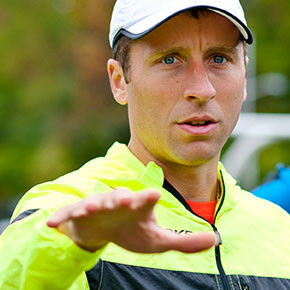
News of the change had the track and field world buzzing on Friday.
“It’s kind of unbelievable,” said a third source, a prominent sports agent. “He’s been in that position for the entire 21 years I’ve been around track and field. He’s been the single most influential person in the sport.”
Neither Capriotti nor Nike could immediately be reached for comment.
Capriotti’s decision comes as Nike is cutting costs and laying off employees. The company lost about $790 million last quarter.
Since Nike brought in John Donahoe as its new CEO and chairman in January, there has been speculation about the ramifications for the company’s sports marketing arm, and for its track and field operations in particular. Donahoe’s athletic background is unknown. But outsiders speculate that the longtime technology executive does not share the passion for track and field of his predecessors Phil Knight and Mark Parker.
Under Capriotti’s watch, Nike solidified its position as the sport’s superpower. It hired more track athletes to endorsement contracts than any other sponsor. It also bankrolled USA Track & Field, the sport’s governing body in this country, signing a sponsorship in 2014 worth more than $400 million.
Nike sponsored three different teams of elite runners, all of them based in Oregon. Its audacious goal was to make American runners once again competitive with the rest of the world.
Capriotti and Nike also helped secure Eugene’s position as one of the world capitals of the sport. He was such a fixture at Hayward Field that his customary spot in the grandstands became known as Cap’s Corner.
The stunning decision to award the 2021 track and field world championships to Eugene came in part because of the enthusiastic support of Knight and Nike. The coronavirus pandemic has delayed the running of those championships in Eugene until 2022.
There was also plenty of controversy. Alberto Salazar was Nike’s superstar coach for the Nike Oregon Project. But Salazar was dogged for years by allegations that he encouraged his athletes to use banned substances. He was banned from the sport for four years “for orchestrating and facilitating prohibited doping conduct.”
Nike sided with Salazar and continued to back him even after the ban, which Salazar is appealing.
by Oregon Live
Login to leave a comment
With Hayward Field’s reconstruction complete, the University of Oregon takes possession
The University of Oregon took formal possession of Hayward Field on Tuesday, bringing to an end a two-year reconstruction project that transformed the well-loved if antiquated UO stadium into one said to be among the best track and field facilities in the world.
Paul Weinhold, president and CEO of the University of Oregon Foundation confirmed the Tuesday handover in a text message on Wednesday.
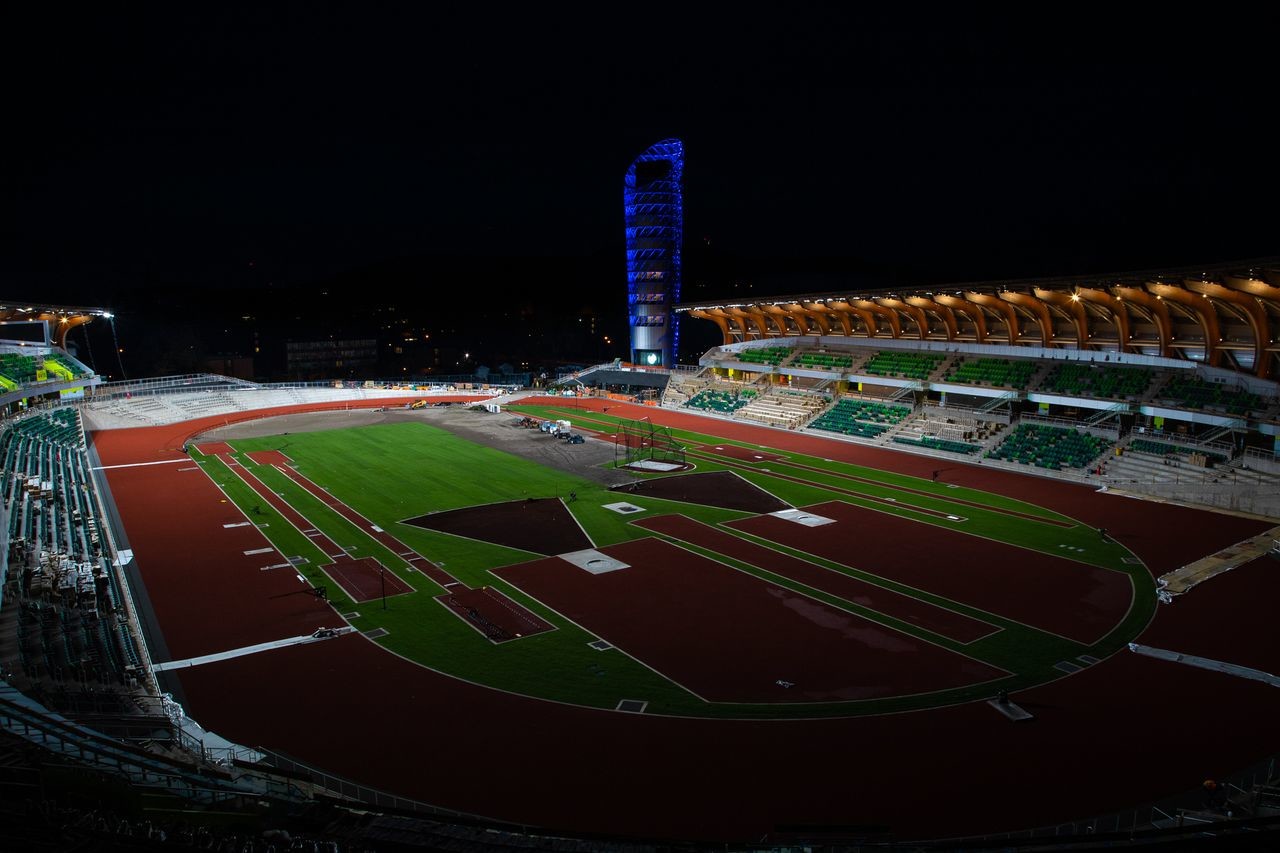
The campus property that houses the stadium had been leased to the limited liability corporation Hayward Field Enhancement for the length of the privately funded project. The project began in June 2018 and is estimated to have cost more than $200 million.
Weinhold said by text he knew of no immediate plans for a public unveiling of the new Hayward Field, and didn’t anticipate one until fall. The campus remains closed to the general public because of the coronavirus pandemic.
“That decision will be a UO Athletics decision,” Weinhold wrote.
Replying Monday by email, UO athletic department spokesman Zach Lawson referred a reporter to the university’s “Hayward Field Renovation” webpage, last updated for the week of June 1.
The original Hayward Field was built as a football stadium in 1919. It has been used for track meets since 1921. It was conceded to be inadequate for many reasons to host the 2021 World Outdoor Track & Field Championships, awarded to Eugene in 2015. The meet since has been delayed until 2022 because of the coronavirus pandemic.
Organizers originally had hoped to preserve as much of the historic stadium’s character as possible, including the east grandstand.
But attempts to raise private money for that design foundered. When Nike co-founder Phil Knight, a former UO track athlete, became involved, the original plans were scrapped in favor of a more modern look.
That led to a contentious back and forth between some longtime fans in the community. Hoffman Construction, the firm that handled the project, acted quickly to level the east grandstand less than two weeks after the conclusion of the 2018 NCAA Outdoor Championships, the final major event staged at the old Hayward Field.
The permanent seating of the new stadium is listed as 12,650 and expandable to nearly,25.000, making it significantly larger than the previous stadium. The older Hayward Field had a listed seating capacity of 10,500. But a hand count done in 2018 revealed no more than 8,500 seats.
Knight and his wife, Penny, are said to have contributed the lion’s share of the project’s funding.
The new stadium is said to feature a number of spectator upgrades, such as 22-inch seats and unobstructed sight lines.
It also will be used as a training facility for members of the UO track team. Among the enhancements are much larger indoor practice areas, locker rooms, a video room, weight room, treatment rooms, a theater and an area for training aids such as hydrotherapy pools and anti-gravity machines.
Attempts Wednesday to reach UO track coach Robert Johnson and Jimmy Stanton, UO senior associate athletic director for communications, were not immediately successful.
by Oregon Live
Login to leave a comment
Nike Develops Face Shield for Health-Care Workers on the front lines of the coronavirus fight
With personal protective equipment in short supply for medical workers on the front lines of the coronavirus fight, Nike is offering up its services.
The Beaverton, Ore.-based athletic company announced today that its innovation, manufacturing and product teams have developed face shields and powered, air-purifying respirator (PAPR) lenses in partnership with health professionals from Oregon Health & Science University (OHSU).
Nike delivered its first shipment of face shields and PAPR lenses to OHSU on Friday. The sportswear giant’s PPE is being provided to medical systems located in the vicinity of its Oregon world headquarters, including Providence, Legacy Health Systems and Kaiser Permanente.
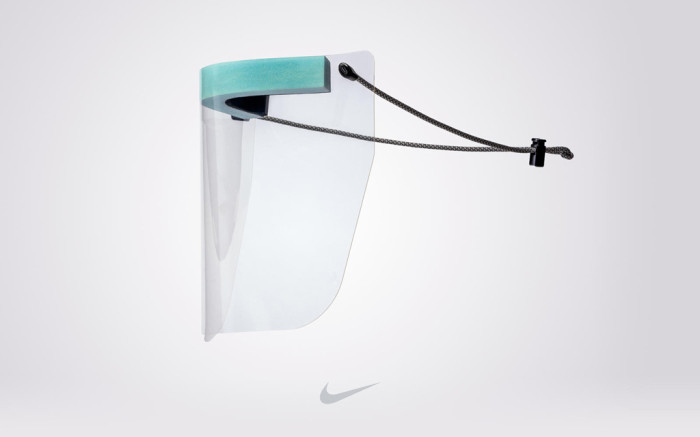
“Nike’s generous response to the COVID-19 crisis helps to instill an added layer of confidence and support for health-care workers that we can safely carry out the jobs we were born to do,” said Dr. Miko Enomoto, associate professor of anesthesiology and perioperative medicine at the OHSU School of Medicine.
The Swoosh’s version of a face shield features elements of its footwear and apparel that have been repurposed, including TPU from its Air soles, collar padding meant for shoes and cords originally destined to become apparel. The full-face shield includes three parts which come together through a nine-step process, a collaborative effort of a few Nike teams at its Air Manufacturing Innovation facilities in Oregon and Missouri. Similarly, Nike is making PAPR helmets using the same TPU that is being utilized for the face shields.

n March, OHSU announced a $7 million donation from Nike’s current and former top brass — CEO John Donahoe and wife Eileen, Chairman Mark Parker and wife Kathy, and founder Phil Knight and wife Penny — to coordinate care and provide equipment as it combats COVID-19 in Oregon.
Other athletic companies based in the United States are also offering their manufacturing capabilities to help solve the PPE shortage. Last week, Under Armour said it has delivered 1,300 face shields to the University of Maryland Medical System and expects to make more than 500,000 fabric face masks and 50,000 fanny packs.
And New Balance said on March 27 that it is creating masks in its Lawrence, Mass., manufacturing facility to be used by health-care professionals.
by Ella Chochrek
Login to leave a comment
More disturbing news about coach Alberto Salazar of the Nike Oregon Project and what about Nike’s founder and billionaire Phil Knight
There has been much talk about Alberto Salazar and the Nike Oregon Project lately but let's not forget about mister NIKE Phil Knight.
Just this week teenage super star Mary Cain said her career was ruined by Salazar and Nike. She was mentally abused by coach Salazar when she was part of the Nike Oregon Project. Nike knew what was going on.
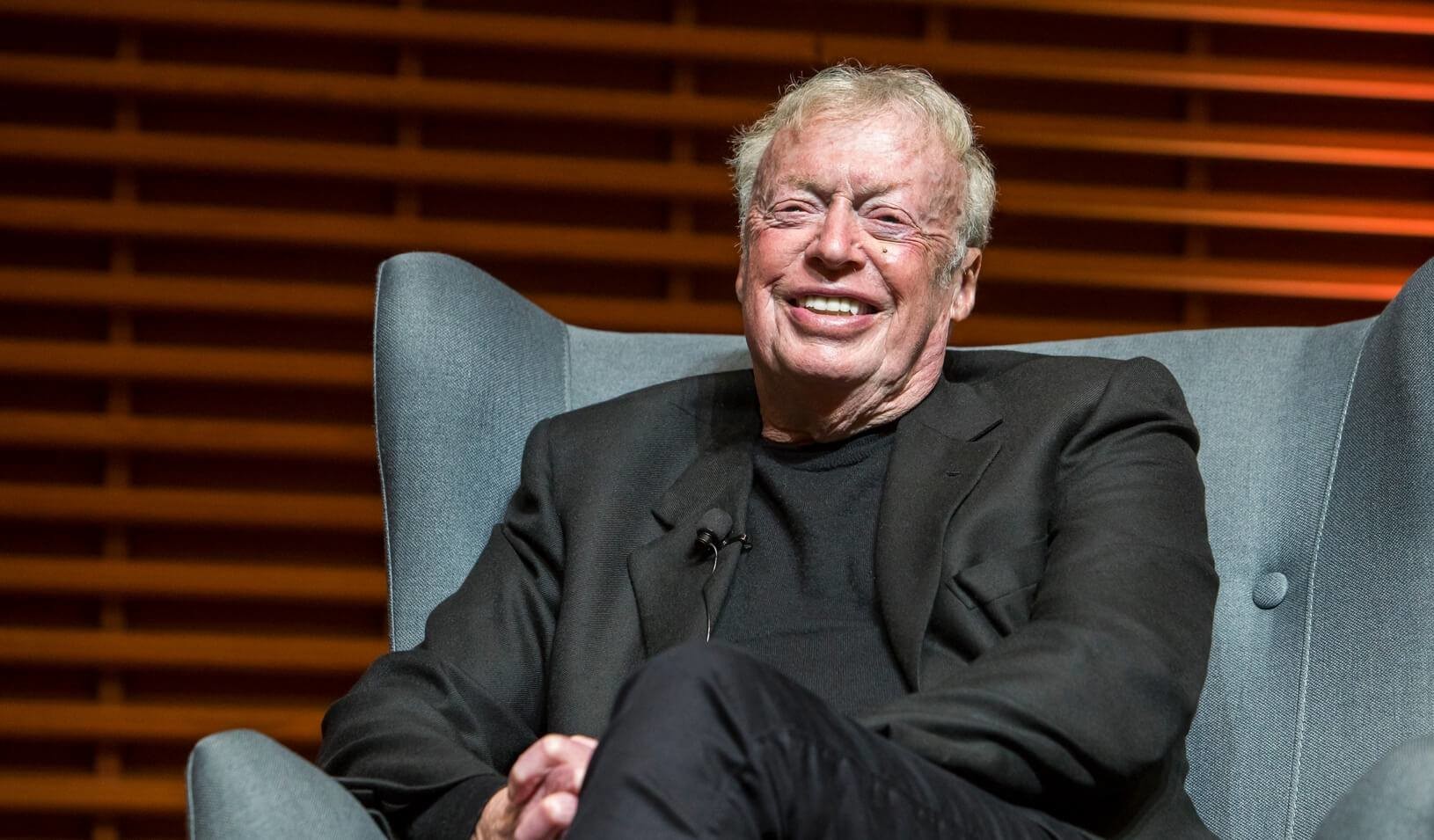
Let’s not forget who Nike is. Phil Knight built Nike into the giant company it is today. He was running things day to day at Nike when the Oregon Project was started in 2001. I am sure he pushed coach Salazar to do whatever it took for their athletes to win races.
Phil Knight ran over a lot of people and companies as he built Nike. Today he is worth over 31 billion dollars and growing. Nike stock is trading near an all time high. I am sure their $250 racing shoes must be helping. A shoe that many feel should be ban. I am sure they did not have it tested or looked at by the world’s governing body (IAAF) before they released it. They just put it on the market. That’s the Phil Knight way. That’s the Salazar way.
I am not a fan of either men. Nor am I a fan of Nike. They tired to destroy my magazine Runner’s World in the early 80’s because I would not rate their shoe number one. This is another story I have told before.
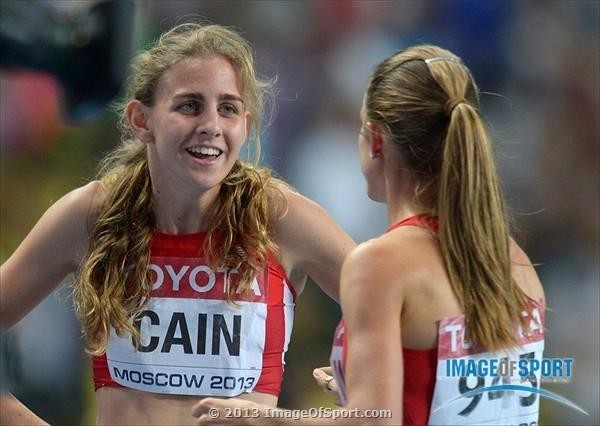
That’s in the past and I have moved on. But things that have been going on more recently can’t be overlooked.
Nike’s power is overwhelming. They think they can do whatever they want. They are still even supporting Salazar, a long-time friend of Phil Knight. Yet Salazar has been banned for four years for doping violations. Should have been a lifetime ban.
How can we continue to turn our back on this? We can’t. We can’t just continue to buy their shoes, making Phil Knight and family even richer.
In response to Mary Cain’s allegations of forced weight loss and public shaming by former coach Alberto Salazar at a now-disbanded Nike-supported running program, Nike has started an investigation into the matter.
When asked for comment regarding Cain’s allegations Friday, a Nike spokesman issued the following statement: “These are deeply troubling allegations which have not been raised by Mary or her parents before. Mary was seeking to rejoin the Oregon Project and Alberto’s team as recently as April of this year and had not raised these concerns as part of that process. We take the allegations extremely seriously and will launch an immediate investigation to hear from former Oregon Project athletes. At Nike, we seek to always put the athlete at the center of everything we do, and these allegations are completely inconsistent with our values.”
Cain’s also claimed that Nike needs to change because it “controls all the top coaches, athletes, races and even the governing body,” and there is a need for more women to be in charge.Nike response seems rather vague to me. What do you think we should do? Thanks Mary Cain for sharing your story. That was very brave.
by Bob Anderson (Founder Runner’s World and My Best Runs)
Login to leave a comment
Nike announces Mark Parker will step down as CEO in 2020, He will be replaced by John Donahoe, a Nike board member and the CEO of ServiceNow
Nike said Tuesday afternoon its longtime CEO Mark Parker is stepping down, effective January of next year.
In a sign of the company’s focus on digital, he will be replaced by John Donahoe, a Nike board member and the CEO of ServiceNow. Donahoe was formerly the CEO of eBay and is chairman of the board at PayPal.
Nike shares seesawed in after-hours trading on the news and were last up less than 1%. ServiceNow shares tumbled more than 10%.
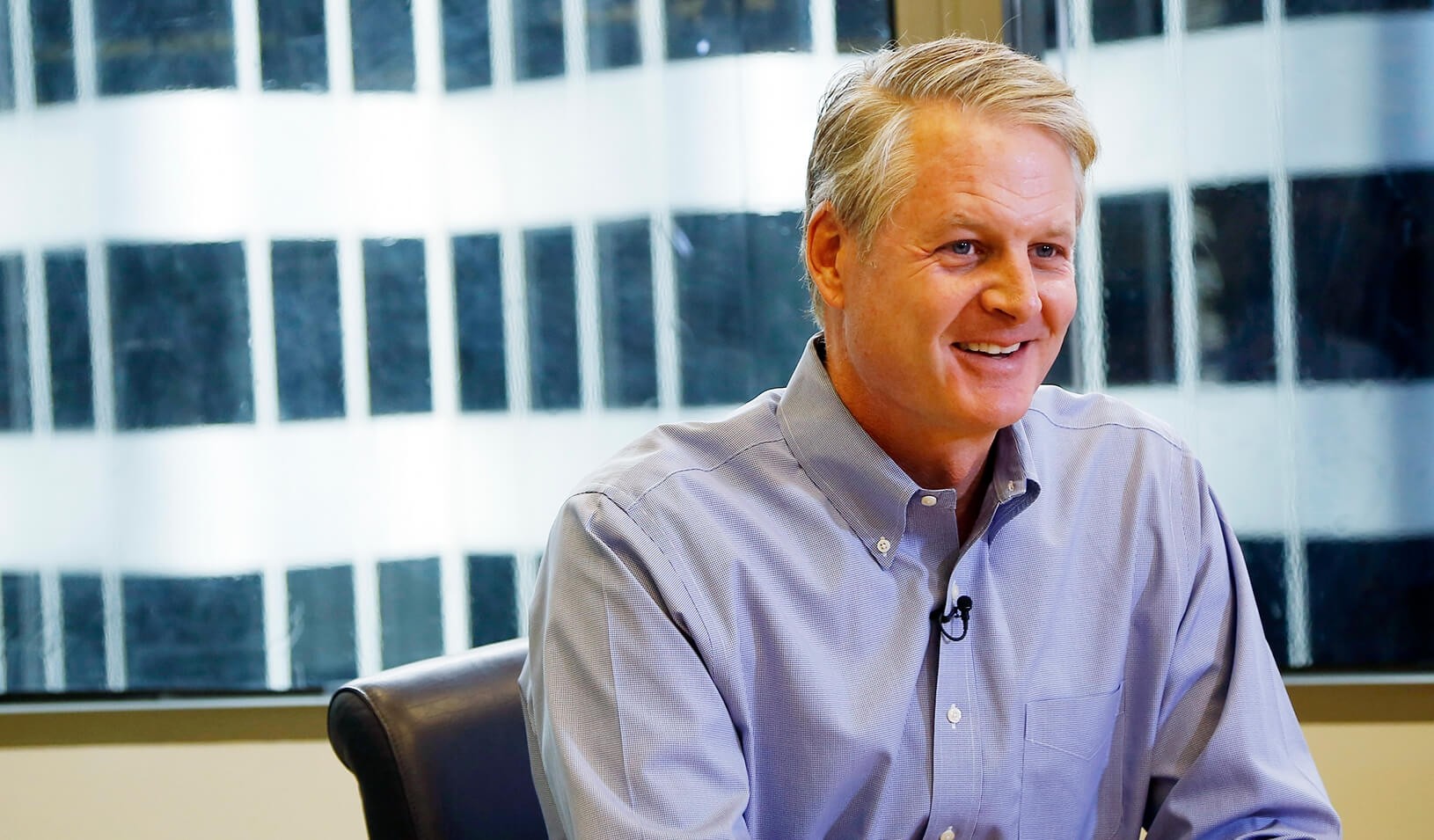
Parker, who has been Nike’s CEO since he took over from founder Phil Knight in 2006, will become the company’s executive chairman, according to the press release. He has worked with Nike for four decades, including as vice president of global footwear and co-president.
Parker said in an interview with CNBC’s Wilfred Frost that Donahoe is “no stranger” at Nike and decidedly is “the best choice to come in.” He said Donahoe should “enable this next level of growth,” digitally, for the company. And he added Nike’s board has spent “many months working on succession planning. ... This is not something that happens in a matter of weeks.”
He also said the decision wasn’t prompted by recent doping allegations connected to Nike’s Oregon Project.

At the end of September, Nike’s head running coach, Alberto Salazar, was banned amid doping allegations, which reportedly included ties back to Parker. The New York Times reviewed emails from the U.S. Anti-Doping Agency that showed Parker had been briefed on Salazar’s various experiments to use testosterone cream for track-and-field athletes.
In an email to employees at the time, Parker said: “Nike did not participate in any effort to systematically dope any runners ever; the very idea makes me sick.” He also said Nike looked into the allegations against Salazar and found no violations.
“We are staying very close to the situation,” Parker told CNBC on Tuesday. “We are in the midst of complex times.”
Nike’s announcement came the same day Under Armour announced its CEO Kevin Plank will be stepping down from the role on Jan. 1.
Under Parker’s leadership, Nike has seen its stock surge and sales climb. But the company has also faced its share of corporate culture scandals and backlash over controversial marketing campaigns.
In 2018, President Trevor Edwards, who many saw as Parker’s likely successor one day, retired.
The retirement came after complaints surfaced at Nike in March 2018, when a group of women presented Parker with a survey on gender discrimination. Edwards was blamed in the lawsuit for creating and exacerbating a “hostile work environment.” Parker responded by restructuring his leadership team, which included ousting Edwards.
Nike in 2018 admitted it failed in hiring and promoting women, and the company ousted at least 11 executives and announced raises for 7,000 employees after conducting an internal review of its pay practices. Parker apologized to employees at large in May.
But the hurdles haven’t stopped there.
Nike, spearheaded by Parker, has had a history of using controversial marketing campaigns to boost its brand.
In September 2018, it dropped a new ad campaign for the 30th anniversary of “Just Do It,” featuring former San Francisco 49ers quarterback Colin Kaepernick. This pulled in a wave of responses, both for and against the commercial slot. But Nike’s “Dream Crazy” campaign ultimately won the “outstanding commercial” award at the Creative Arts Emmy Awards this year, marking the first time a Nike commercial had won the award since 2002.
by Lauren Thomas
Login to leave a comment
The Pre Classic will never be the same as they rip down the stadium in Eugene Oregon
This is not right. We can thank Phil Knight for putting up millions of dollars to make this happen. Peter Thompson posted this photo on Facebook about an hour ago.
He said," Is this the required careful deconstruction of an historic structure, carefully cataloguing everything as you go and ensuring that timbers and metalwork can be re-purposed elsewhere?" Or, is it, "The wilful destruction of an iconic building?"
Lots of history had been torn away. Phil Knight made millions by using Pre in NIKE advertising. In his memory he could have built "his" new Track someplace else, as Joe Henderson pointed out months ago, in Eugene and left this stadium standing or at least the track and the east grandstands.

I know that Phil Knight has donated millions to the University and probably to the city and how could anyone stand in his way.
I also know that Phil Knight and NIKE have done a lot of positive things for running but this is not one of them.
Peter continued, "Bill Bowerman's favorite seat in the upper row of the East Grandstand has been ripped out, undocumented as it was piled with all the other bleachers - and this is the true respect that Phil Knight has granted to Bill Bowerman."
I know the new track is going to look amazing but it will no longer be Pre's track. The Pre Classic will never be the same. This was a mistake that we let happen. Hayward Field will never be the same.
by Bob Anderson
Login to leave a comment
Tracktown USA hopes to be selected to host the USATF 2020 Olympic Trails
Login to leave a comment
Don’t make plans just yet to attend the USATF 2020 Olympic Trials at Mt Sac
Login to leave a comment


